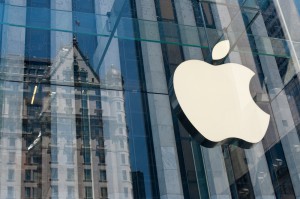 There is no doubt that Apple has been one of the most successful businesses of the entire century. In addition to its millions of fans, one other testament to its popularity is the sheer number of copycat products that have been developed over the years. In fact, some would say that based upon history, Microsoft itself owes its famous operating system to Apple.
There is no doubt that Apple has been one of the most successful businesses of the entire century. In addition to its millions of fans, one other testament to its popularity is the sheer number of copycat products that have been developed over the years. In fact, some would say that based upon history, Microsoft itself owes its famous operating system to Apple.
However, it hasn’t always been smooth sailing for Apple. During the 1990s, the company was in a steady decline. This was partly due to the fact that Mac owners did not have a tech or sales support team available. Because of this, the Windows era took over almost exclusively.
By 2001, Apple was determined to satisfy existing customers and gain new ones by focusing upon marketing efforts in traditional retail stores. Below are some of the basic strategies that eventually took Apple beyond the $300 billion mark.
1. Quality is the most important aspect of any marketing campaign, since it all begins with the product or service being offered.
Without quality, no company can build the sort of stable momentum it needs to survive and grow. No matter what marketing brilliance Apple had employed, ultimately sub-par products would have done the company in eventually.
Above all, some level of sophistication is key. This is essential in order to consistently beat the competition. For example, there is an unmistakable luxury that exists inside of Apple Stores. The products are interactively displayed so that users can touch and experience them, unlike in so many other stores. The beauty of it is that even the most simple products and services can give off an air of refinement. The staff is plentiful and accessible. Also, most of the stores offer free in-depth classes on how to use their products, adding to their allure. Doing this makes all of their products accessible even to novice users.
2. Consistent branding messages are another tactic employed by Apple.
Regardless of where an Apple product is purchased, it has the same level of quality. This puts forth a branding message of excellence that has attracted legions of loyal customers. Much like the dime store giant of days gone by, F.W. Woolworth, Apple set out to make their stores browse worthy. Each store is uniquely designed so that there is no doubt that people are in an Apple store. While there is nothing gratuitous about the design of Apple’s products, the company has managed to make customers feel as though they are treating themselves to an elite product line that epitomizes a level of luxury like no other. They are packaged to be simplistically appealing, yet always do more than similar products. As a result, Apple customers feel special just for using their products. This is perhaps the most ingenious public relations strategy in retail marketing history.
3. Apple has sought to cultivate customer enthusiasm.
The basis for loyalty is enthusiasm. In order for customers to become loyal, they must be connected to the products and services they are using. Every savvy business marketer knows that it is the repeat customer who will sustain a business. Therefore, rather than spend so much time chasing after new customers, ensure that the existing ones are happy. Not only does this make the road to repeat business shorter, but the word of mouth advertising from satisfied customers is invaluable.
When a company has fans camped out overnight in the rain for days just to be the first people to get new products, they have reached rock star level. By creating fans rather than just customers, a company is pretty much guaranteed a strong and loyal base. In today’s competitive marketplace, this is essential for any business to survive.
Hayley is a freelance blogger. To improve your business marketing and decision making, check out Business dashboard for CEOs.
Image Credit: Shutterstock.com



